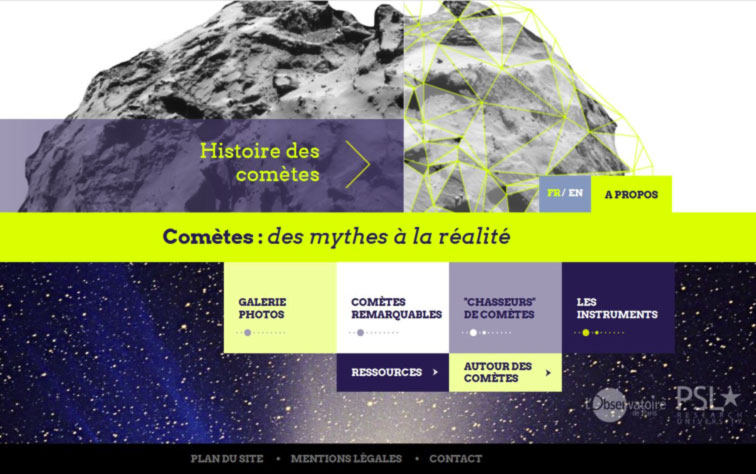
A member of the Jupiter family of comets (in the sense that its orbit is strongly influenced by Jupiter), Wirtanen, also known as 46P, is a short period comet in the ecliptic.
Its orbital period arund the Sun is 5,44 years. Its last perihelion passage was in July 2013.
According to the ephemeris published by the Institute of celestial mechanics and ephemeris computation of the Paris Observatory, the comet will reach its new perihelion on December 12th 2018 ; it will then be at a distance of about 1,05astronomical units (AU) from the Sun.

With its 1 km diameter core and a relatively important intrinsic activity, it will furnish an interesting celestial spectacle on December 16th 2018, as it skirts the Earth, at a distance of 12 million km (0,078 AU).
Observational conditions
If the meteorological conditions are favorable, it will be visible close to the Pléiades, in the constellation of Taurus. Of 5th magnitude, it will look like a small 1 degree diameter nebulosity in a very dark moonless sky...
Paris Observatory astronomers suggest that one should be in a carefully chosen place at sunset : the site should be far from any town, dark, and if possible in the countryside or in the mountains, with an unobstructed view to the East.
To recognize it, it is best to have binoculars or a telescope.
Since its discovery at Lick Observatory (California) in 1948, Wirtanen has been constantly observed by professional and amateur astronomers. Of its 12 successive perihelion passages, it has been observed 11 times.
It had been initially selected by ESA as the cometary target of the Rosetta mission, but was finally rejected in favor of comet 67P/Churyumov-Gerasimenko, following a delay in the launching of the Ariane rocket.

